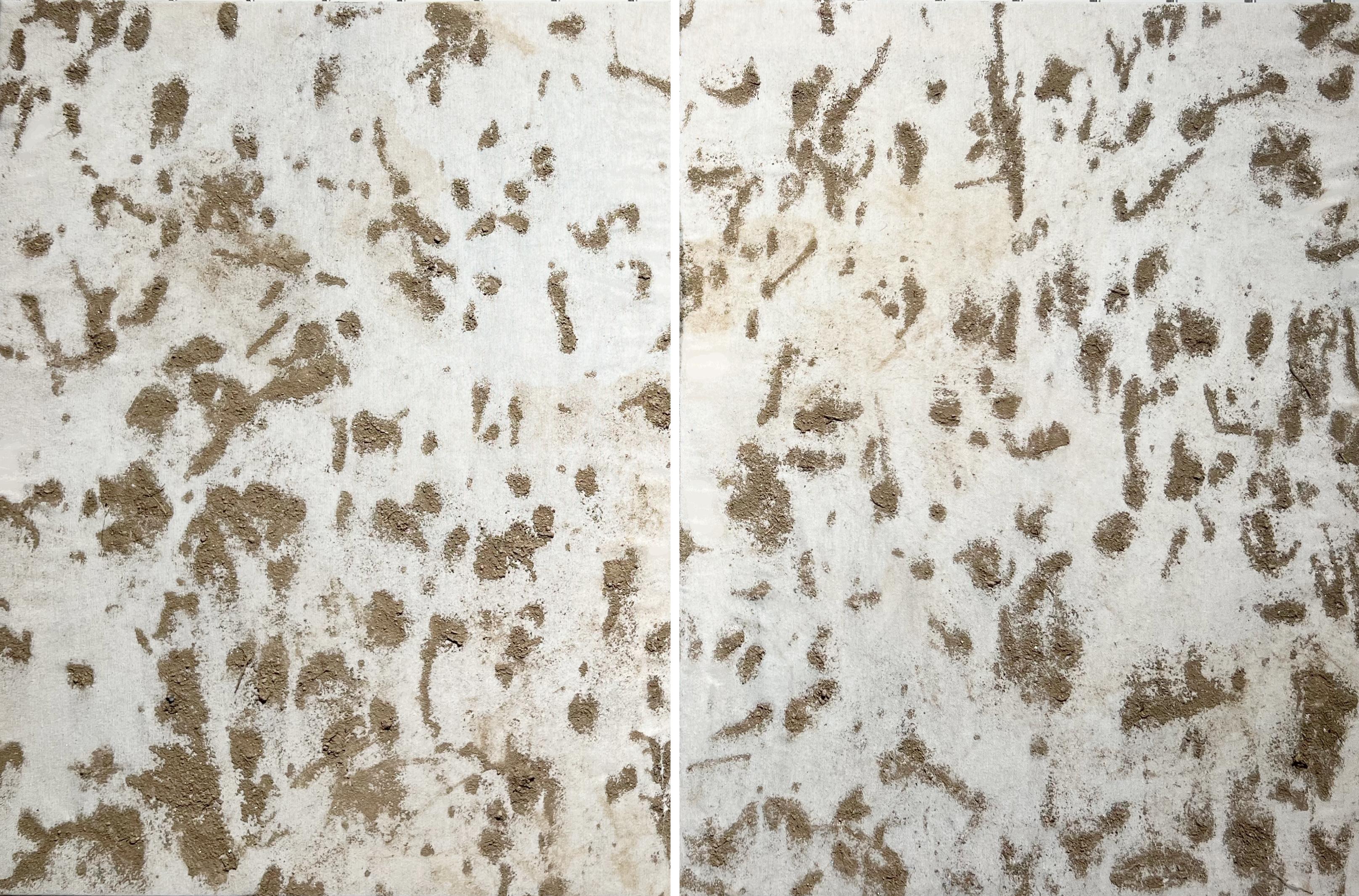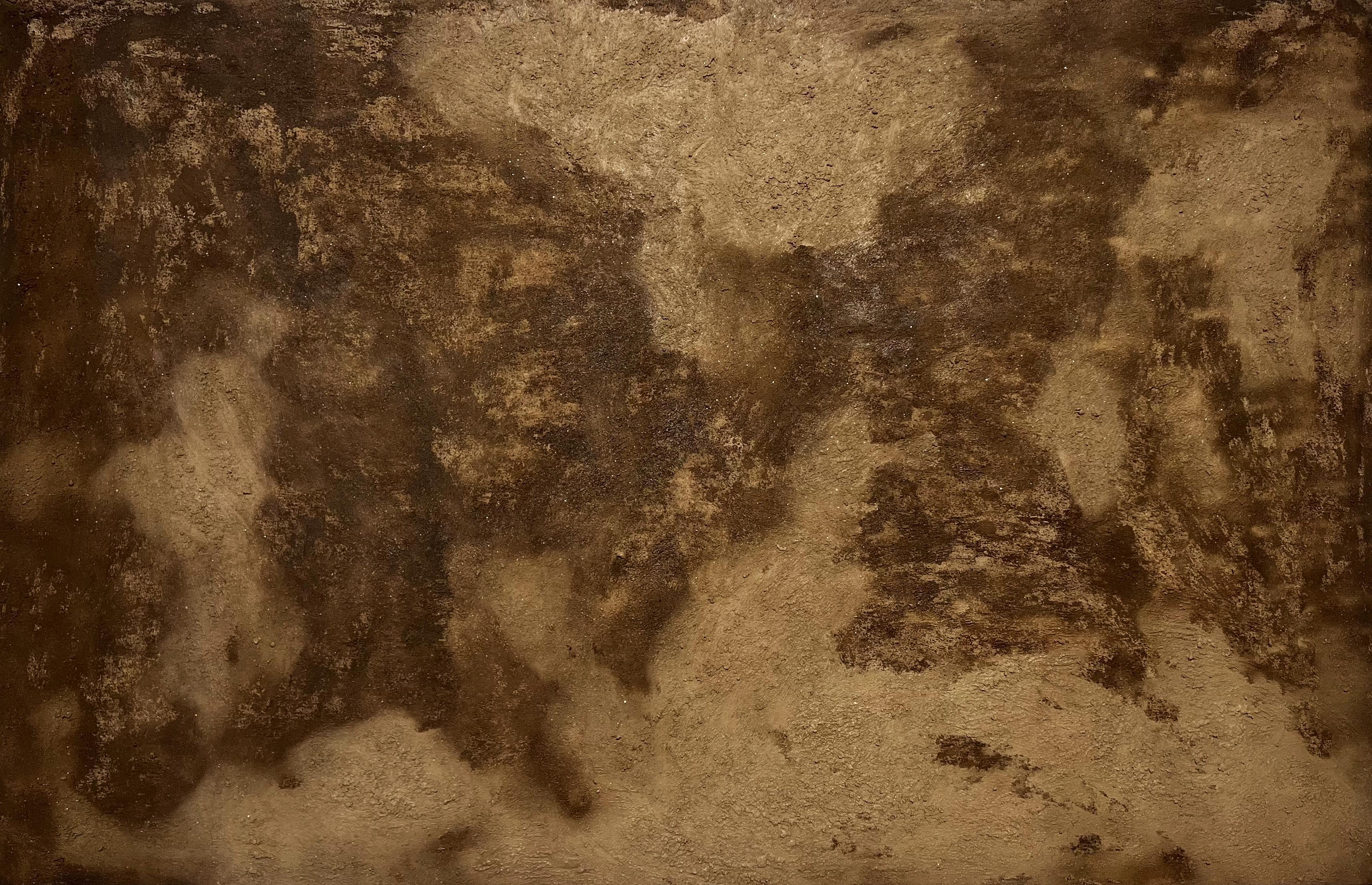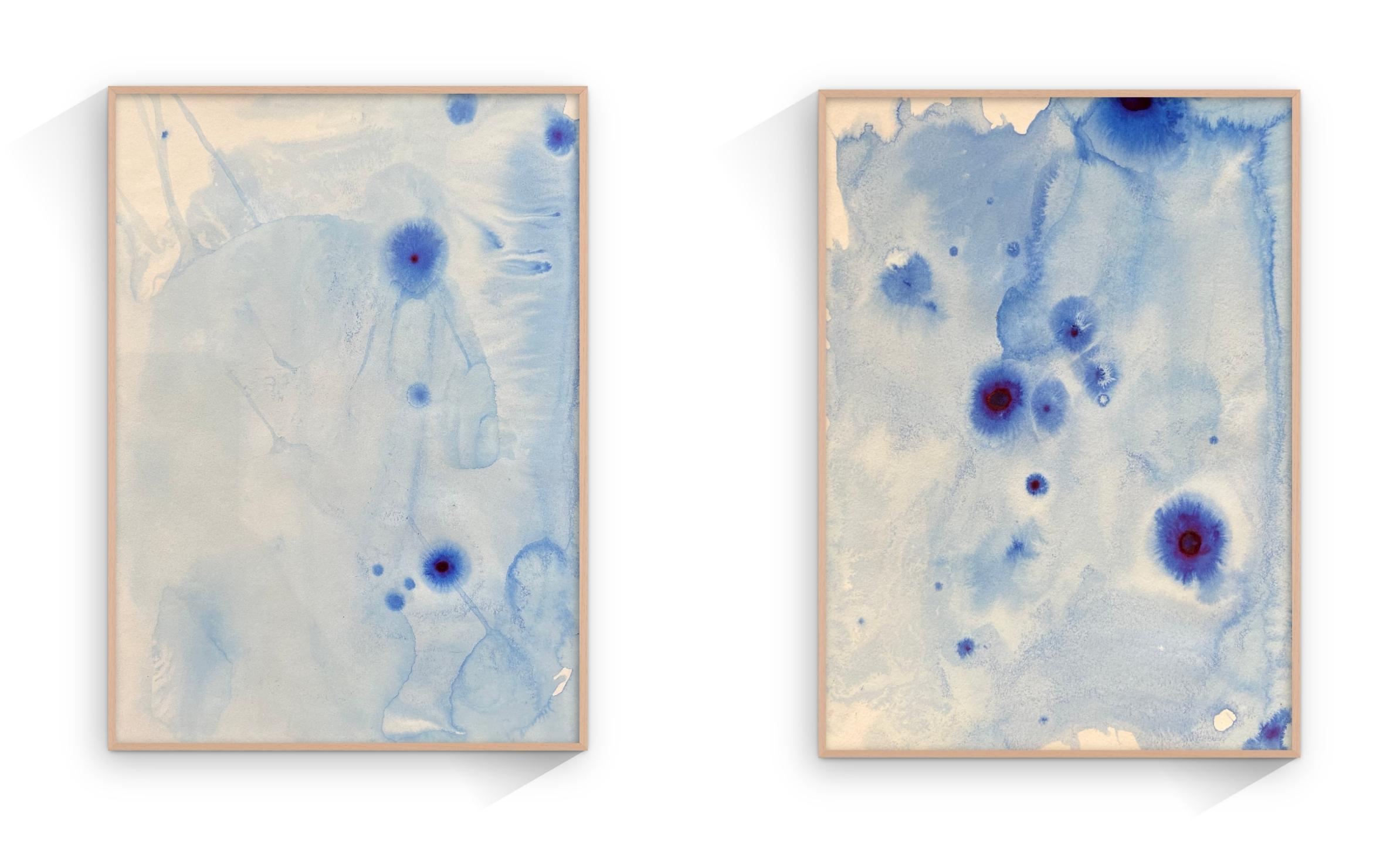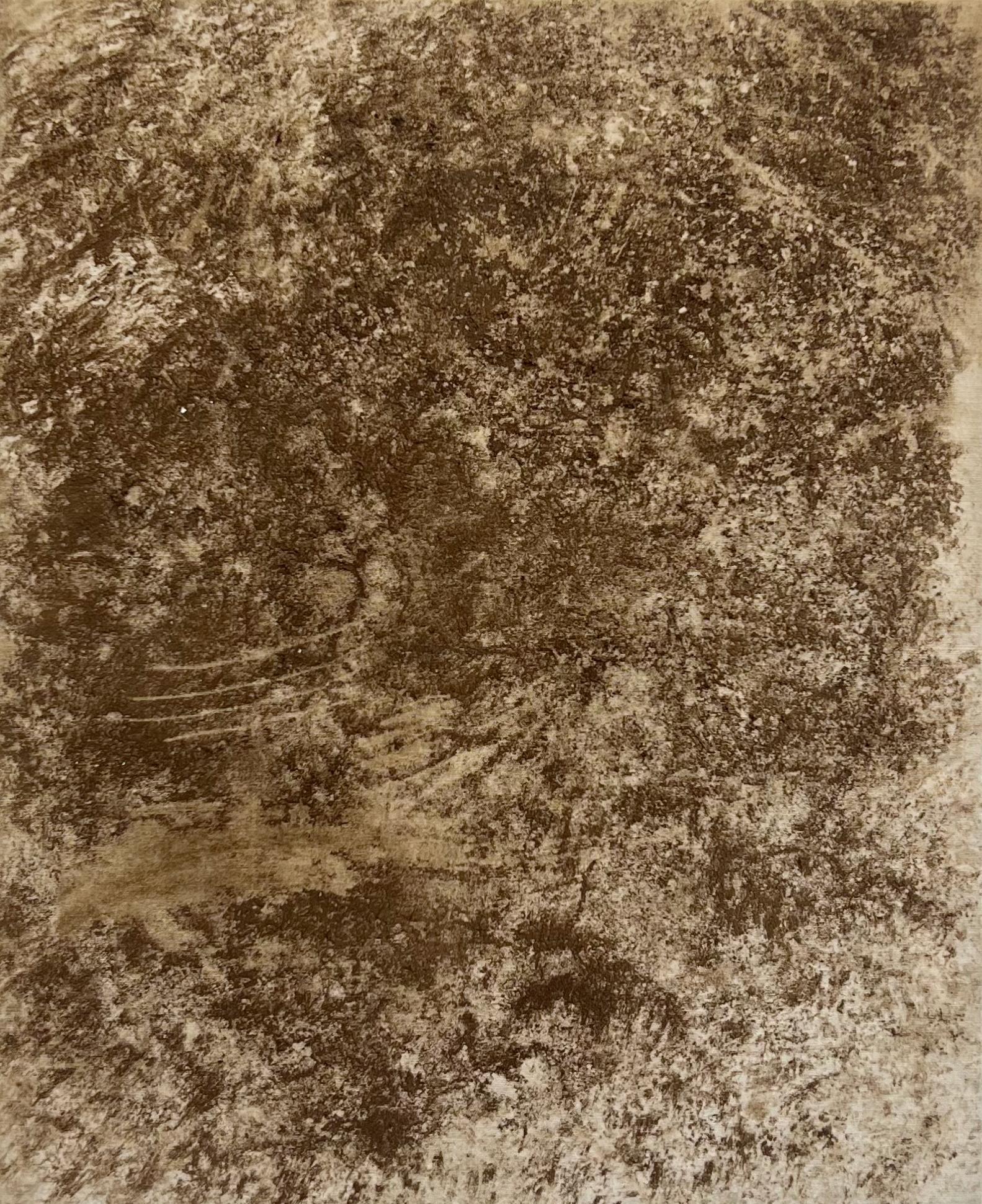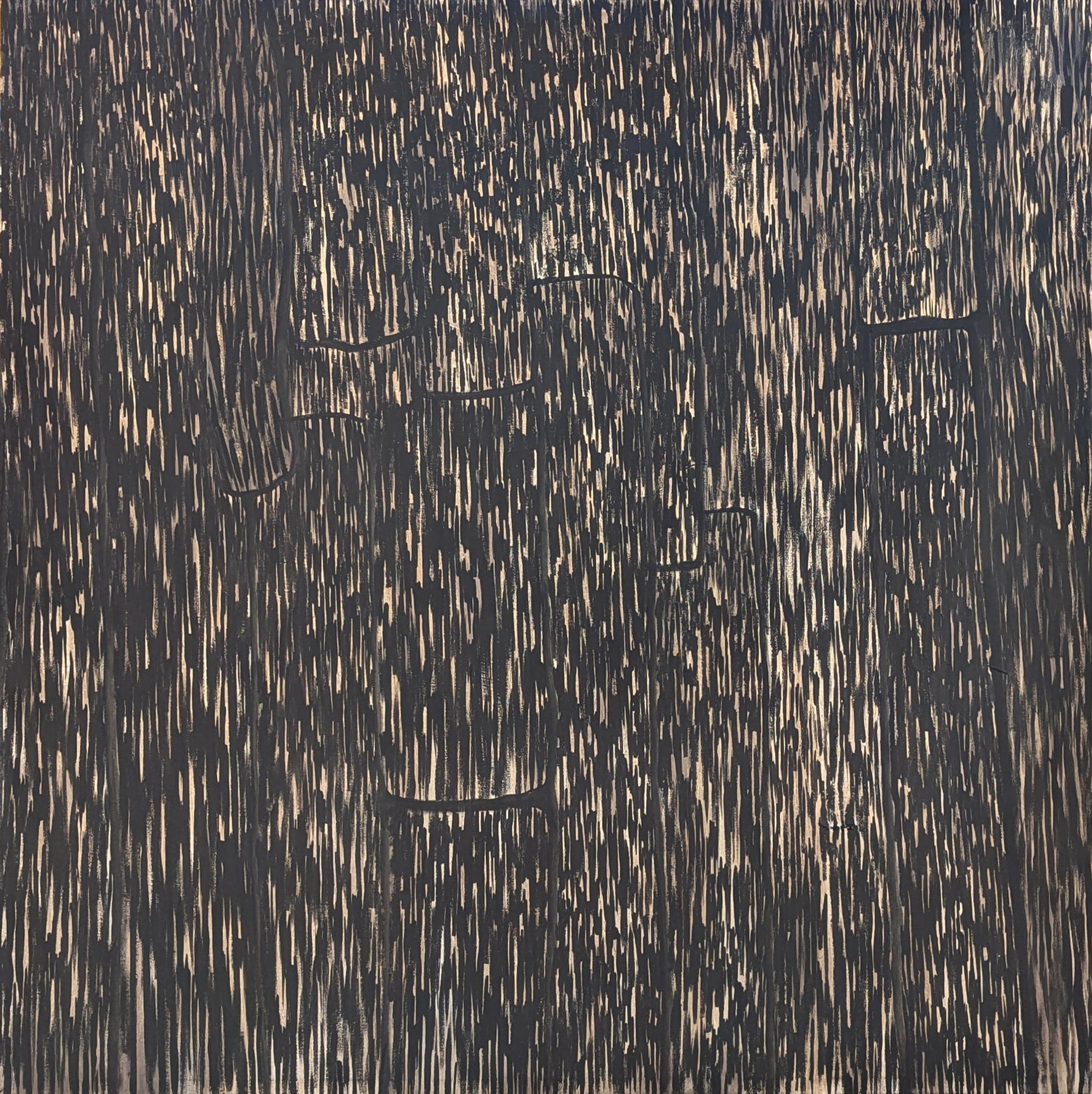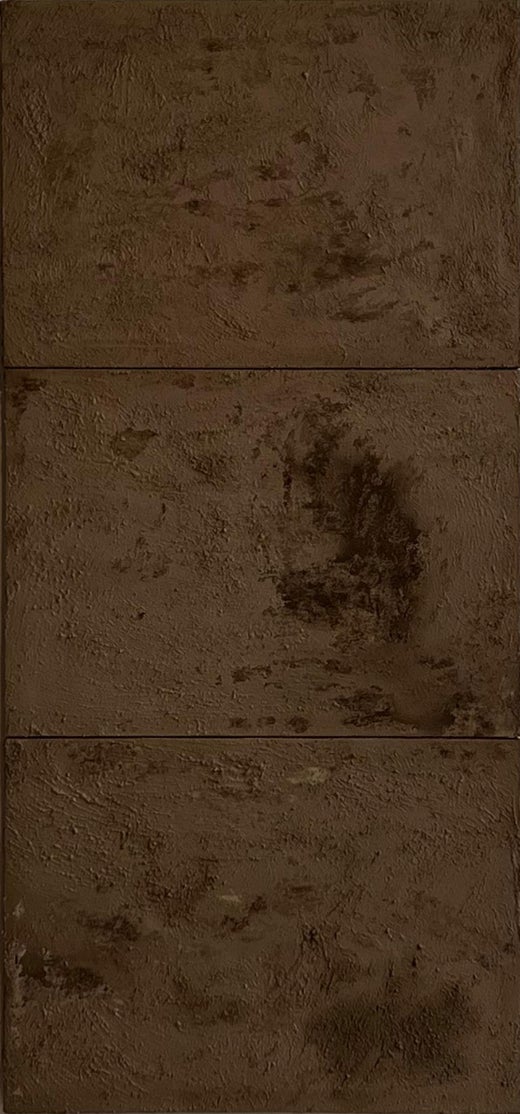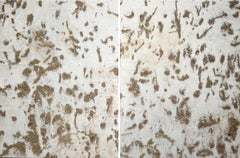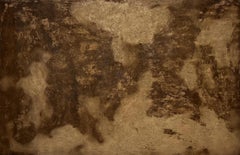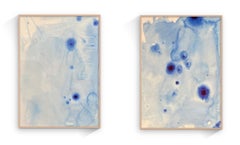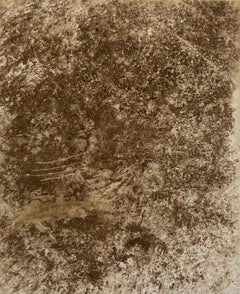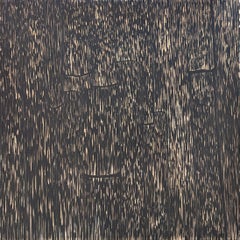Items Similar to Set of 2 paintings / Natural pigment on canvas, pine wood, conceptual
Video Loading
Want more images or videos?
Request additional images or videos from the seller
1 of 8
TUSETSet of 2 paintings / Natural pigment on canvas, pine wood, conceptual2023
2023
$3,904.43
£2,951.85
€3,300
CA$5,459.35
A$5,966.43
CHF 3,139.73
MX$71,463.04
NOK 39,516.60
SEK 36,906.97
DKK 25,140.94
About the Item
This series by the multidisciplinary artist TUSET (1997, A Coruña, Spain) titled "Land paintings (or what painting is not)", is a series of paintings that the artist had buried in the old orchard of his house, now abandoned, like most farms in rural areas of Spain. This set includes a diptych, 2 paintings of 50 x 40 cm each, it is made of cotton canvas on the same territory where the artist produces these paintings, his native village, a valley where less than 100 inhabitants live (Monteagudo, Galicia, Spain).
In the artist's own words about this series of works:
"With these works I did what has always been done with the land, cultivate it but in this case instead of planting legumes or vegetables, I planted paintings, buried them in the field where just last year corn grew in spurts and this year... let me know to my grandmother that these paintings sprang from the earth and she replied: “everything comes out of the land.” I see influences in this work from the works of Giovanni Anselmo and his use of agricultural materials or Alberto Burri with his “Cretto di Gibellina” (1984 - 1989) or Francis Alÿs, whom I have never lost track. These paintings are present by bringing the beauty and primitivism of nature closer to the viewer to create in them the awareness that they are part of an environment that surpasses all their conditions and their finite existence on the planet, fully criticizing the new leisure model, consumerist.
Walter de Maria responded in an interview to something that I liked even though he is far from being a Christian or a believer and that is: “God has given us the earth and we have ignored it.” I also like to relate this series to him because really, like his artistic work, the earth is not a space for contemplation but for experimenting from within, meditating on it."
TUSET (1997, A Coruña) is one of the most recognized artists of the millennial generation, his career has been advancing throughout these years with in situ work on the landscape, with the landscape and through the landscape. The organic elements in his work are a signature of the artist's identity and his concerns and aesthetic investigations follow a very straight path. His greatest concern is painting, about which he thinks and reflects in all his works. Without leaving aside the rest of the media with which he works and exhibits such as sculpture, installation, drawing or photography as well. He is situated between the manifestations of Land Art / Earthworks, Italian Art Povera, the Japanese Mono-Ha Group or Conceptual art among others. He has a degree in Fine Arts from the University of Vigo (Spain) and the University of Passo Fundo (Brazil). He has also studied Philosophy and has a master's degree in artistic and architectural heritage management. His work is present in several recognized private and institutional collections, is exhibited at art fairs and works with several galleries at this time.
The work includes a certificate of authenticity signed by the artist. If you need more photographs or information about the artist's available works, do not hesitate to contact us. The work is framed in an authentic pine wood frame, it has a pair as you can see in the photos, there are two, but they are sold separately, if you want more information, do not hesitate to contact us.
- Creator:TUSET (1997, Spanish)
- Creation Year:2023
- Dimensions:Height: 19.69 in (50 cm)Width: 15.75 in (40 cm)Depth: 0.2 in (5 mm)
- Medium:
- Movement & Style:
- Period:
- Framing:Framing Options Available
- Condition:
- Gallery Location:Carballo, ES
- Reference Number:1stDibs: LU2117213757082
undefined
About the Seller
5.0
Vetted Professional Seller
Every seller passes strict standards for authenticity and reliability
1stDibs seller since 2022
16 sales on 1stDibs
- ShippingRetrieving quote...Shipping from: Carballo, Spain
- Return Policy
More From This Seller
View AllOrganic painting on cotton with pine wood frame, Postminimalism, Land art
Located in Carballo, ES
Diptych made by TUSET (1997, A Coruña) one of the main artists of the renewal of millennial painting. Influenced by the Italian art of the second half of the 60's, Arte Povera, Land ...
Category
21st Century and Contemporary Arte Povera Mixed Media
Materials
Organic Material, Cotton Canvas
Organic landscape painting, natural pigment with abstract shapes, conceptual art
Located in Carballo, ES
This series by the multidisciplinary artist TUSET (1997, A Coruña, Spain) titled "Land paintings (or what painting is not)", is a series of paintings that the artist had buried in th...
Category
21st Century and Contemporary Neo-Expressionist Landscape Paintings
Materials
Canvas, Organic Material, Wood, Varnish
Set of 2 Abstract Expressionist, Original pieces, Landscapes and seascapes
Located in Carballo, ES
Lot of 2 original works by TUSET (A Coruña, 1997) made with ink and seawater on paper. The works can be framed on request or sent to you in a protected envelope for you to place, onc...
Category
21st Century and Contemporary Abstract Expressionist Abstract Paintings
Materials
Ink, Handmade Paper
Natural paint made of mud on canvas, chocolate brown, territory, landscape
Located in Carballo, ES
This series by the multidisciplinary artist TUSET (1997, A Coruña, Spain) titled "Land paintings (or what painting is not)", is a series of paintings that the artist had buried for a...
Category
21st Century and Contemporary Contemporary Figurative Paintings
Materials
Organic Material, Wood, Varnish, Cotton Canvas
Empty and full, informalist painting with natural pigments on cotton with frame
Located in Carballo, ES
This series by the multidisciplinary artist TUSET (1997, A Coruña, Spain) titled "Land paintings (or what painting is not)", is a series of paintings that the artist had buried for a...
Category
21st Century and Contemporary Neo-Expressionist Abstract Paintings
Materials
Organic Material, Wood, Varnish, Cotton Canvas
Empty and full, informalist painting with natural pigments on cotton with frame
Located in Carballo, ES
This series by the multidisciplinary artist TUSET (1997, A Coruña, Spain) titled "Land paintings (or what painting is not)", is a series of paintings that the artist had buried for a...
Category
21st Century and Contemporary Neo-Expressionist Abstract Paintings
Materials
Organic Material, Wood, Varnish, Cotton Canvas
You May Also Like
Contemporary Minimalist Abstract Painting in Earth Tones by Emma Labattaglia
Located in Barcelona, Barcelona
At Escat Gallery, we are committed to upholding the highest standards of trust and professionalism for our collectors. Every artwork in our collection includes a Certificate of Authe...
Category
2010s Abstract Abstract Paintings
Materials
Cotton Canvas, Oil, Linen, Charcoal
“From Timber to Lumber” Contemporary Neutral Toned Wood Bark Abstract Painting
Located in Houston, TX
Contemporary abstract painting by Houston, TX artist Tra' Slaughter. The painting features brown and black toned logs stacked on each other to create a wood bark pattern. Signed, tit...
Category
2010s Contemporary Abstract Paintings
Materials
Canvas, Oil
Frammento – Original Abstract Wall Art, Charcoal & Pure Pigment on Canvas, large
By Marilina Marchica
Located in Agrigento, AG
Artist: Marilina Marchica (b. 1984, Italy)
Title: Frammento
Year: 2024
Medium: Charcoal and pure mineral pigment on cotton canvas
Size: 60 × 130 cm (23.6 × 51.2 in)
Signature: Signed...
Category
2010s Abstract Interior Drawings and Watercolors
Materials
Canvas, Pigment, Carbon Pigment
$2,460 Sale Price
20% Off
Free Shipping
Untitled abstract painting mixed media on canvas
By Deyan Valkov
Located in Sitges, Barcelona
Title: Untitled
Artist: Deyan Valkov
Technique: Oil and mixed media on canvas
Dimensions: 23.6 x 19.7 in
Condition: Unframed
Year: 2002
Style: Abstract Material
Description:Th...
Category
Early 2000s Abstract Abstract Paintings
Materials
Mixed Media
Contemporary Mixed-Media Abstract Painting on Canvas by Emma Labattaglia 2025
Located in Barcelona, Barcelona
At Escat Gallery, we are committed to upholding the highest standards of trust and professionalism for our collectors. Every artwork in our collection includes a Certificate of Authe...
Category
2010s Abstract Abstract Paintings
Materials
Cotton Canvas, Oil
" Water Ground" Large size Abstract Painting Diptych made in Italy
By Marilina Marchica
Located in Agrigento, AG
Water Ground
oil on cotton canvas
110 x180cm
Original Art
Ready to hang
diptych
land / sea
Marilina Marchica, born in Agrigento, where she works and lives,
she graduated in Paintin...
Category
2010s Contemporary Abstract Paintings
Materials
Cotton Canvas, Oil
More Ways To Browse
Abandoned House
Vegetable Painting
Francis Alys
Ve Boisvert
Will Roberts
1995 Abstract Painting
Abstract Art For Sale
Art With Teal Blue
Cedric Morris
Female Expressionist Artist
Graffiti Skateboard
Park City Utah
Pastel Minimalist Painting
Perspective Mirror
Stephen Gammell
Swimmer Abstract
Three Sisters Vintage
Abstract Rabbit
